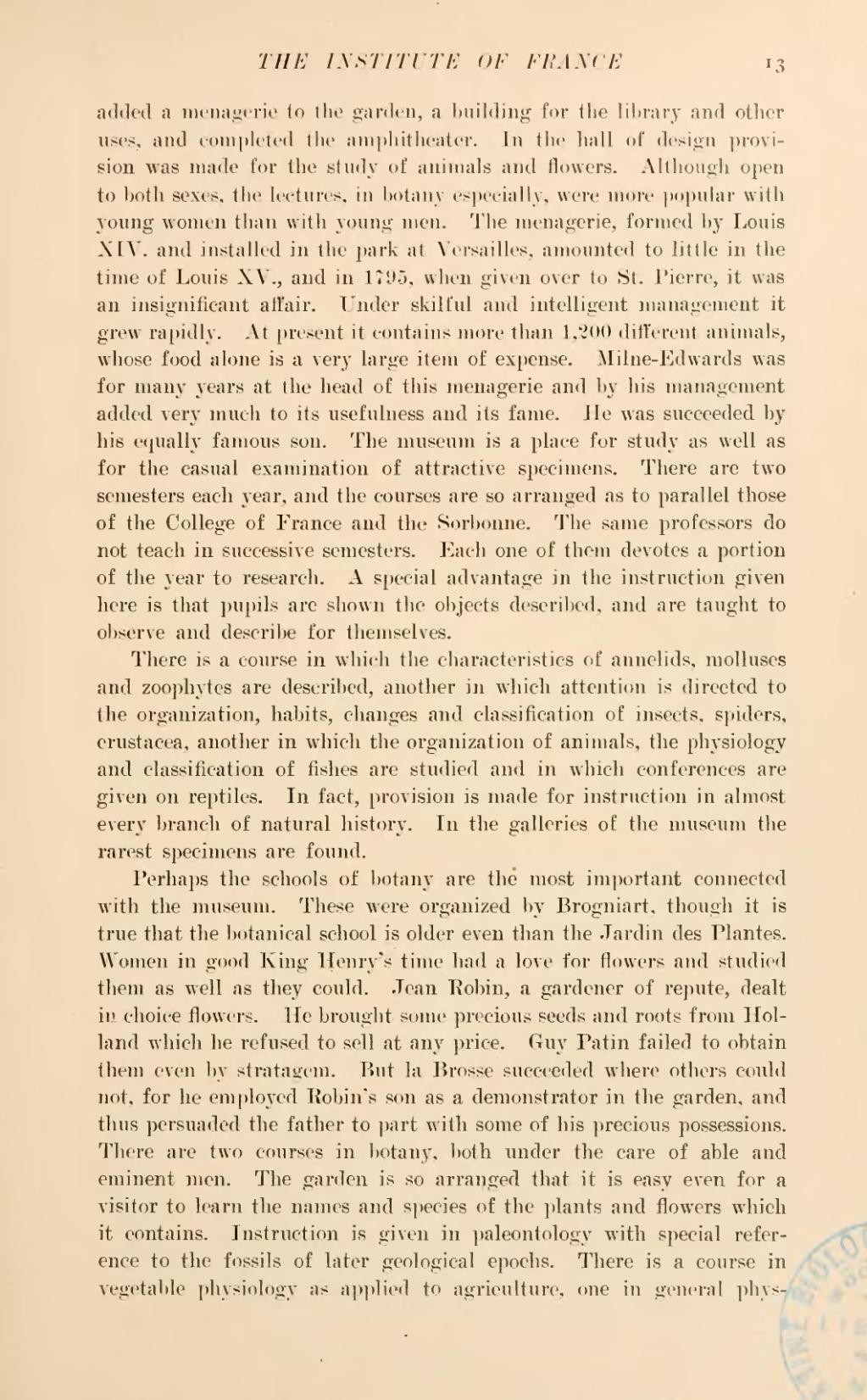added a menagerie to the garden, a building for the Library and other uses, and completed the amphitheater. In the hall of design provision was made for the study of animals and flowers. Although open to both sexes, the lectures, in botany especially, were more popular with young women than with young men. The menagerie, formed by Louis XIV. and installed in the park at Versailles, amounted to little in the time of Louis XV., and in 1795, when given over to St. Pierre, it was an insignificant affair. Under skilful and intelligent management it grew rapidly. At present it contains more than 1,200 different animals, whose food alone is a very large item of expense. Milne-Edwards was for many years at the head of this menagerie and by his management added very much to its usefulness and its fame. He was succeeded by his equally famous son. The museum is a place for study as well as for the casual examination of attractive specimens. There are two semesters each year, and the courses are so arranged as to parallel those of the College of France and the Sorbonne. The same professors do not teach in successive semesters. Each one of them devotes a portion of the year to research. A special advantage in the instruction given here is that pupils are shown the objects described, and are taught to observe and describe for themselves.
There is a course in which the characteristics of annelids, molluscs and zoophytes are described, another in which attention is directed to the organization, habits, changes and classification of insects, spiders, crustacea, another in which the organization of animals, the physiology and classification of fishes are studied and in which conferences are given on reptiles. In fact, provision is made for instruction in almost every branch of natural history. In the galleries of the museum the rarest specimens are found.
Perhaps the schools of botany are the most important connected with the museum. These were organized by Brogniart, though it is true that the botanical school is older even than the Jardin des Plantes. Women in good King Henry's time had a love for flowers and studied them as well as they could. Jean Robin, a gardener of repute, dealt in choice flowers. He brought some precious seeds and roots from Holland which he refused to sell at any price. Guy Patin failed to obtain them even by stratagem. But la Brosse succeeded where others could not, for he employed Robin's son as a demonstrator in the garden, and thus persuaded the father to part with some of his precious possessions. There are two courses in botany, both under the care of able and eminent men. The garden is so arranged that it is easy even for a visitor to learn the names and species of the plants and flowers which it contains. Instruction is given in paleontology with special reference to the fossils of later geological epochs. There is a course in vegetable physiology as applied to agriculture, one in general phys-
